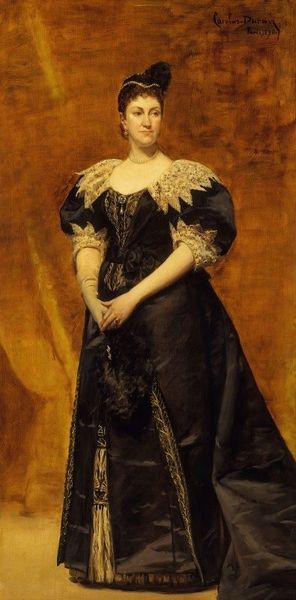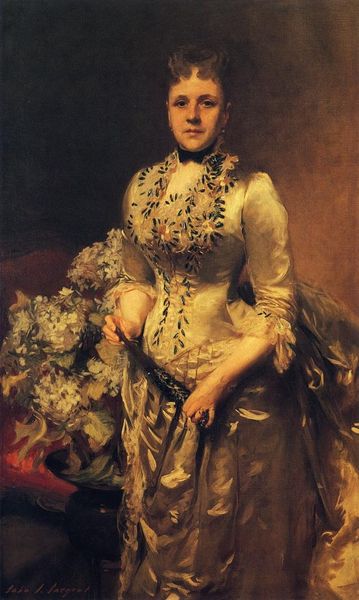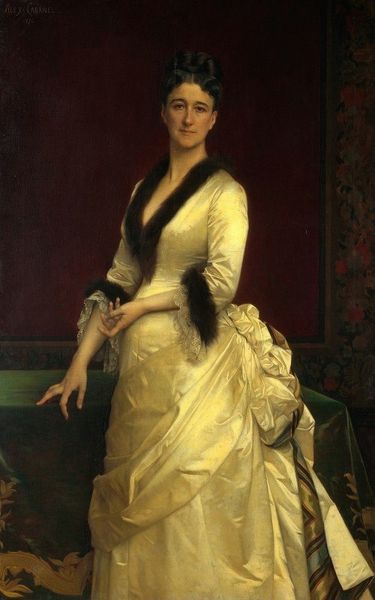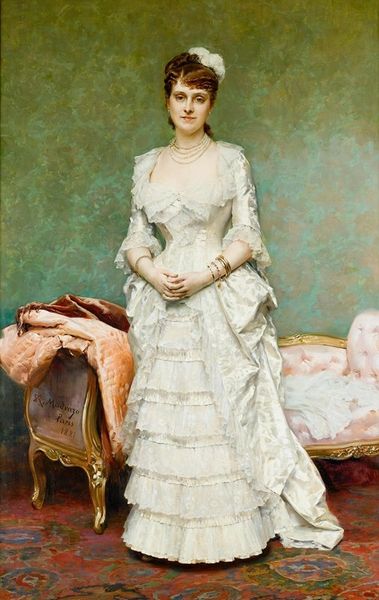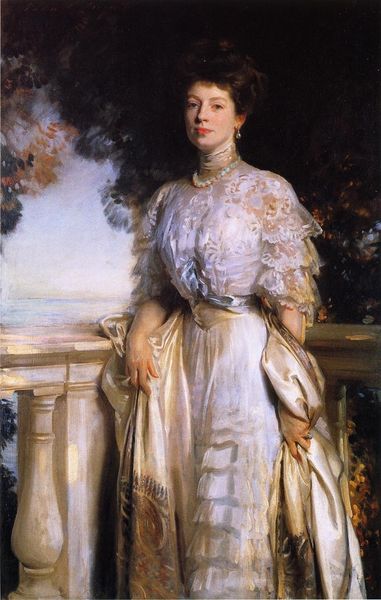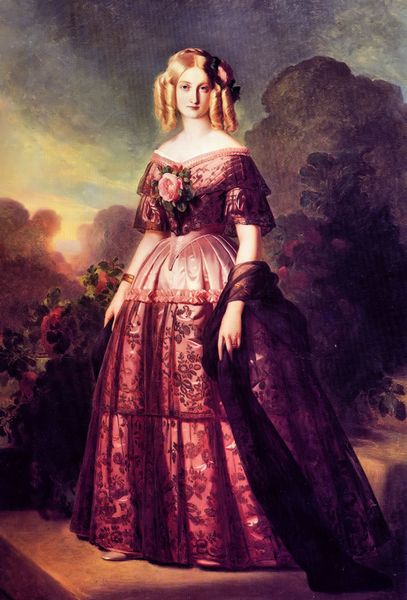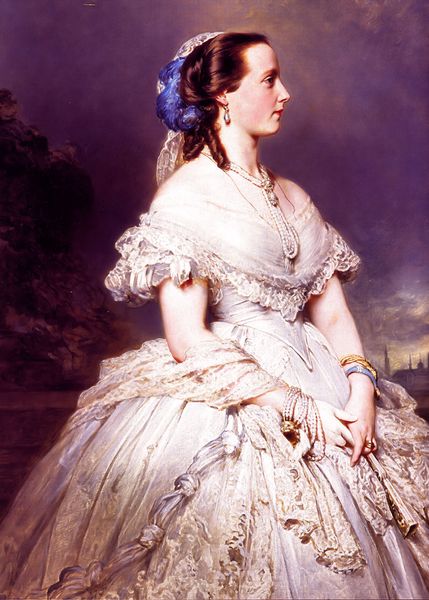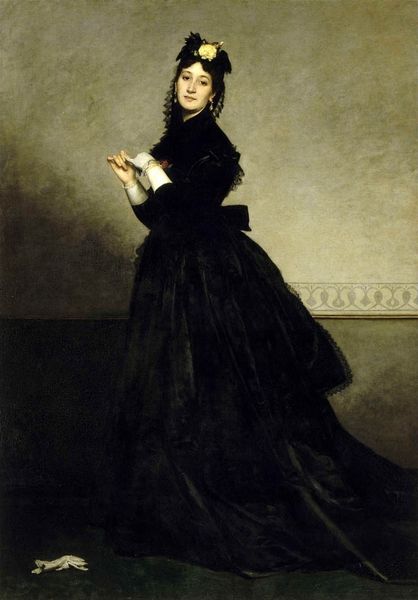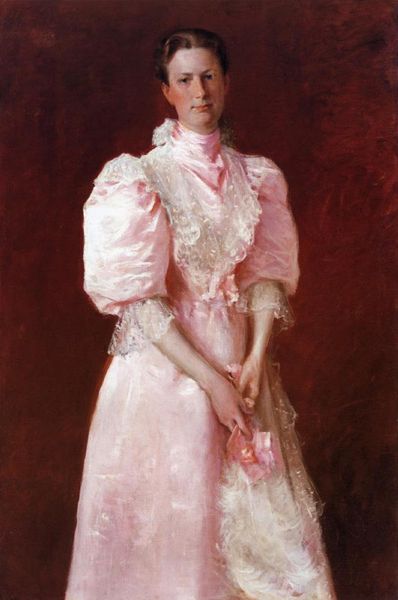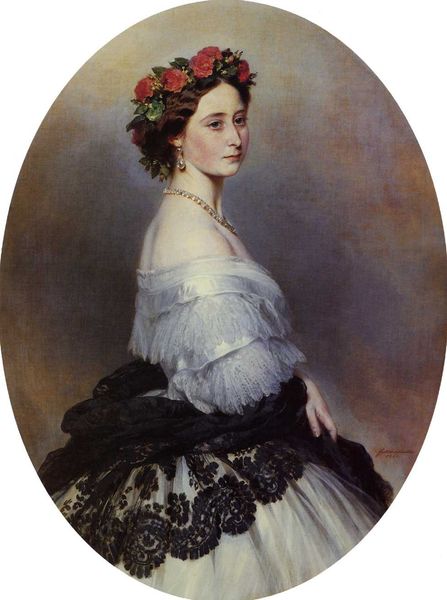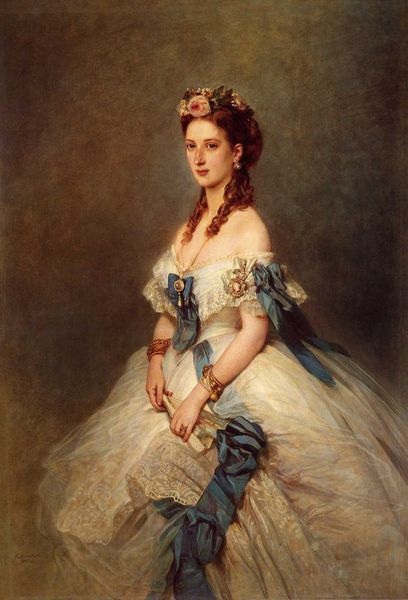
painting
#
portrait
#
painting
#
famous-people
#
costume
#
romanticism
#
veil as a decoration
#
costume
#
history-painting
#
academic-art
#
decorative-art
#
lady
#
dress
#
female-portraits
#
decorative art
Copyright: Public domain
Editor: So, this is Franz Xaver Winterhalter’s "Portrait of Queen Marie Amelie of France," painted in 1842. It’s striking how the painting just *overflows* with fabric, lace, and texture. She appears reserved, but the luxurious details suggest a life of privilege. What strikes you most about this work? Curator: The excess, darling, the sumptuousness of it all! It's a study in power as performative art. Winterhalter wasn't just painting a portrait; he was constructing an image, a narrative of divine right draped in velvet and lace. Look at the lace itself; each thread speaks volumes. Does it tell us about the Queen, or about the *idea* of queenship that Winterhalter wanted to create? Editor: I hadn’t thought about it as constructing an idea, but you're right. It feels so… curated, every single detail perfectly in place. It almost feels staged, even artificial, like she’s playing a part. Curator: Precisely! And isn't that the delicious irony of it all? Royalty, especially then, was a performance, a role one inhabited, wore, *became*. Winterhalter captures not just the likeness, but the very *essence* of that carefully constructed identity. Did the Queen chose what she would wear, how she would pose for the image she projects or do you think the artist controlled this, I wonder? Editor: That's fascinating to consider. This was so much more than a record of appearance; it's like a piece of propaganda, of image-making! Curator: It truly is. Thinking about portraits this way almost re-writes them as performative theatre, rather than captured instances in time. How utterly marvelous, isn't it? Editor: I’ll definitely never see portraits the same way again! Curator: Excellent, my dear! Keep seeking, keep questioning, and the art will continue to unfold its secrets for you.
Comments
No comments
Be the first to comment and join the conversation on the ultimate creative platform.
